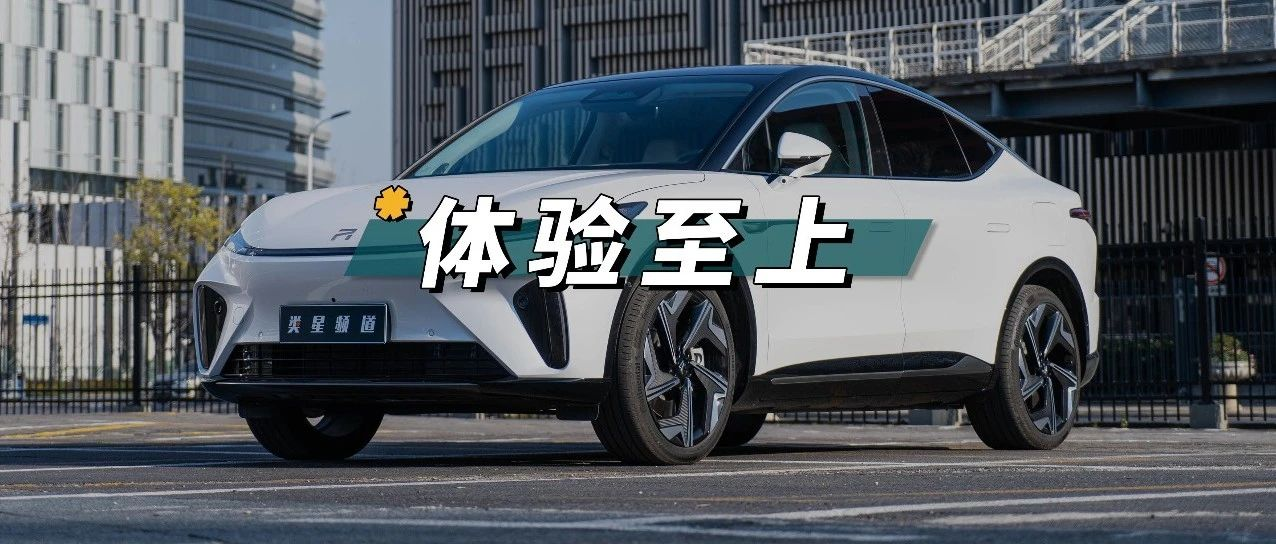Author: I The Office
On the last day of 2022, I got my hands on a Flyin R7. On the first day of the new year, Flyin announced that the delivery volume of R7 in December was 1523, ranking among the top in the high-end pure electric market at the 300,000 level. After experiencing it for three or four days, it is evident that the delivery level of Flyin R7 is not only based on its product strength and price.
Before experiencing it, I also participated in a Flyin immersive experience activity, in which an IMI circuit was set up. This was my first encounter with Flyin R7. Being backed by SAIC Group, Flyin’s chassis tuning, power response, space layout, and other “hardware capabilities” should not be a problem. Therefore, my psychological threshold was actually quite high.
After a simple experience, Flyin R7’s mechanical quality did not disappoint me at all.
After intense driving on IMI Circuit, I had already understood R7’s excellent handling experience. This time, I wanted to quietly experience how Flyin R7 performs in daily use after receiving the vehicle.
However, when I first received Flyin R7, it gave me a “big surprise.” The driving mode only had stepless adjustment, super energy-saving mode, and snow mode. Later, it became clear that Flyin R7’s power response and kinetic energy recovery can be truly “customized.” That’s why it’s called stepless adjustment mode.
If you adjust the power response to the lowest level, you can experience a 1.5L natural aspirated + CVT power combination on Flyin R7. If you adjust it to the highest level, the sudden burst of torque from the electric motor brings a dizzying feeling that makes you really feel like you are driving a car that accelerates from zero to one hundred in just around 4 seconds.
Compared to power, the customizable kinetic energy recovery is the real must-have for me. For most models, kinetic energy recovery is usually divided into three gears. Speaking for myself, it’s always challenging to find the right amount of kinetic energy recovery. Forced kinetic energy recovery can be too heavy, and the standard kinetic energy recovery sometimes feels a bit weak. Therefore, after driving Flyin R7 for about two days, I finally found the perfect amount of kinetic energy recovery. The drag feeling is not too heavy, and the deceleration feeling brought by the kinetic energy recovery fits my driving habits just right.In addition, the RisingAuto R7 has three levels of adjustable steering force and even three levels of adjustable brake feel, which can be customized according to the driver’s preferences. This kind of customization is sweet for drivers. It is not difficult to see that RisingAuto has a good understanding of the pain points of car users and provides more choices, which is always what users expect. Furthermore, after several days of experience, I found that the RisingAuto R7’s performance in intelligence is excellent.
Use this LCC, and traffic jam is no longer a headache
The RisingAuto R7 is equipped with advanced driver assistance system including the RISING PILOT fully integrated advanced smart driving system like NOA. Currently, customers can enjoy two-year free usage rights valued at 12,000 yuan. However, from a long-term perspective and subscription system, I think that many users would choose the basic driving assistance ability. Therefore, this time I experienced the performance of RisingAuto R7’s ACC + LCC, and the result was unexpected.
First of all, let me start with the conclusion. Based on the performance of the ACC and LCC in the past few days, the RisingAuto R7 is definitely among the top tier players currently.
Firstly, let’s talk about longitudinal control. In the use of assisted driving functions, longitudinal control is often the most critical factor in the driving experience and the point I pay more attention to. Many models I have experienced tend to brake too late when encountering crawling or stationary vehicles in front of them, resulting in a sudden strong brake and a strategy of directly reducing speed when facing cars trying to cut in.
Sudden braking and sudden acceleration are disasters for the driving experience. The RisingAuto R7 is very detailed in longitudinal control. When facing cars trying to cut in, it will not suddenly slow down, but will make decisions by quickly judging the relative speed of the front car. As shown in the figure below, it has completed this overtaking response with almost no reduction in speed, which is extremely important for driving experience on high-speed/high-level roads.
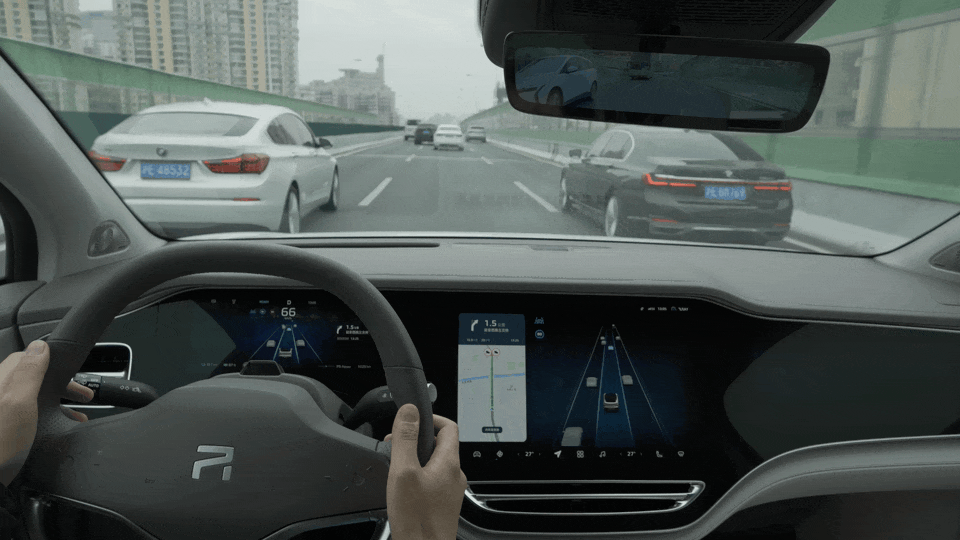
During the daily commuting period, slow-following of the previous cars during peak hour is also the most common scenario I encounter. RisingAuto R7’s grasp of the timing of car following and the braking force are very satisfying. When the front car leaves about one car length, the R7 will automatically start to follow, and almost never encounter a car that tries to cut in. There is no sudden braking in slow-following, and the braking force is basically the same as when I drive by myself.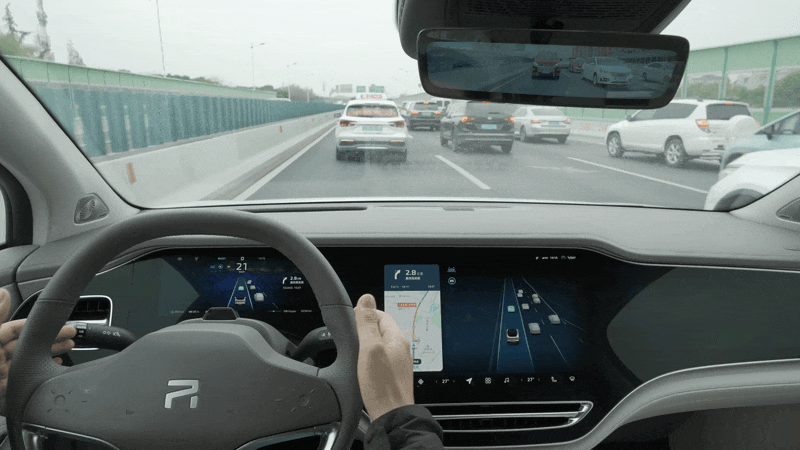
Next is the lateral control. The trivial side of lane centering is that it remains stable. Like the curvature at the exit of the South Bund Bridge, the RisingAuto R7 can steadily center between lanes at speeds ranging from 40 to 50 km/h, and can perfectly handle general ramp curvatures. At the same time, the RisingAuto R7 uses the same automatically-resetting turn signal lever as Tesla for seamless lane changing.
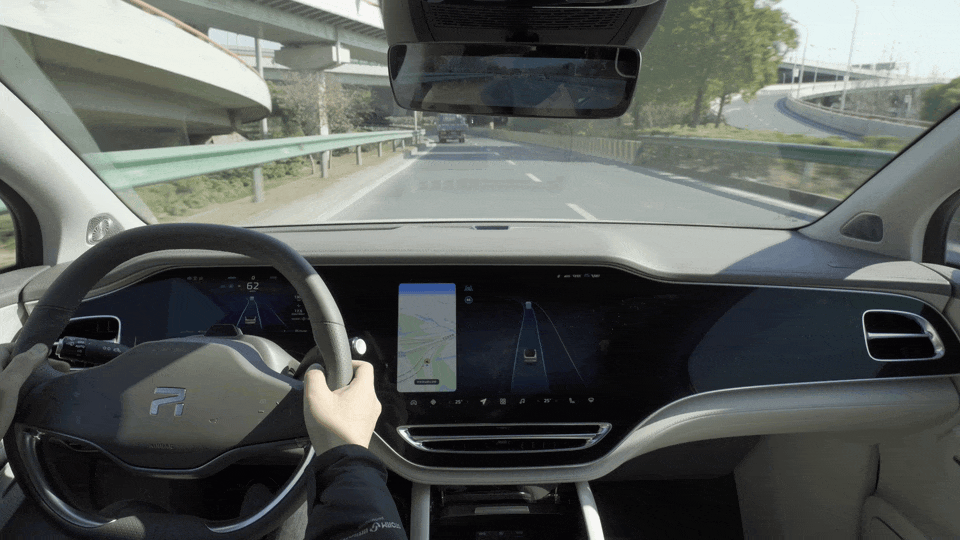
Speaking of changing lanes with a turn signal, the RisingAuto R7 can basically respond in 1 second. In my actual experience, once the turn signal lever is activated and I turn my head to look at the rearview mirror, the vehicle initiates the lane change with an exceptionally high success rate. The only downside is that there is still a significant distance maintained from the vehicle to the rear, for safety reasons. Hopefully, the efficiency of automatic turn signalling can be improved later. When faced with situations where it is impossible to change lanes because of parallel vehicles, the RisingAuto R7’s approach is not to abandon the automatic lane change, but rather slow down and complete the change by itself.
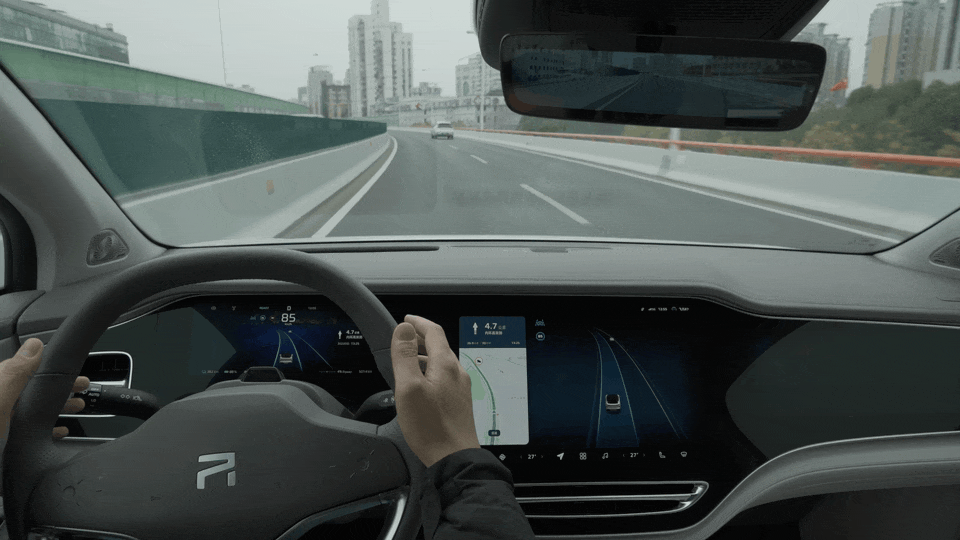
Lastly, let’s discuss the “humanization” aspect in the basic assisted driving capability of the RisingAuto R7. An excellent adaptive cruise control (ACC) + lane centering control (LCC) performance has achieved 80 points of the task, but RisingAuto R7 obviously does not settle for this. For polishing details is key to the success of a good product. In the assisting driving state, I found that the RisingAuto R7 did not exit the assisted driving mode with a slight turn of the steering wheel, unlike many other car models which would exit the PILOT mode upon turning the wheel. The frequent exits can lead to a discontinuous driving experience, which is not user-friendly for the driver.
Why is it better to have an experience where assisted driving mode does not exit upon turning the steering wheel?
During daily driving, there will inevitably be crossing the line or vehicles that are not centering over the road randomly. Occasionally, there will be sudden obstacles on the road surface. Maintaining a centered state will reduce the sense of safety when driving. Therefore, there will always be a need to move towards the other side of the lane or to smoothly complete sharp turns at high speeds by adjusting the steering wheel.Translate the following Chinese text in Markdown to English Markdown text, professionally, keeping the HTML tags inside Markdown, only output the result.
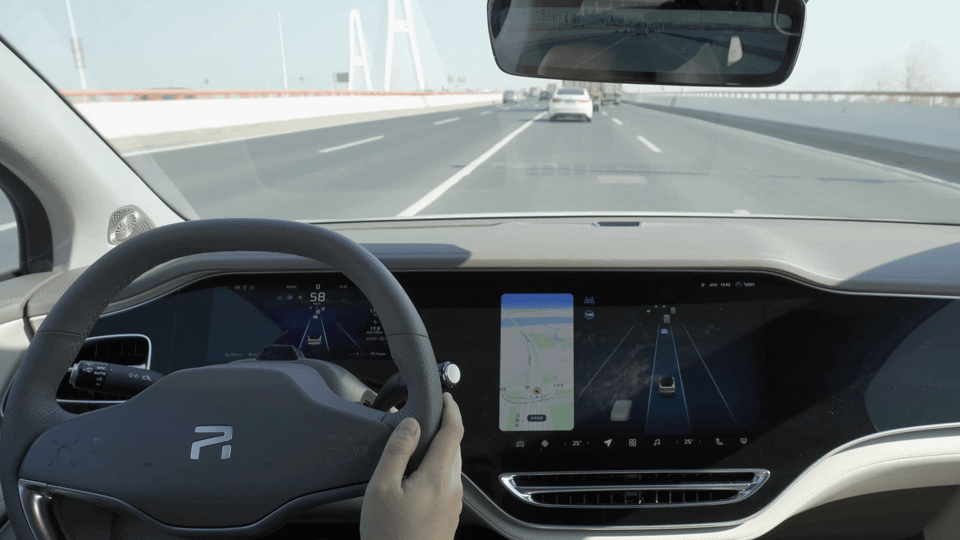
Apart from that, in the short experience of a few days, there are many small details to be mentioned about the basic assisted driving ability of the FEIFAN R7, such as foreseeing automatic avoidance of large trucks, being able to be activated at a low speed of 5 km/h, without interruption when passing through urban intersections, and so on. Let’s talk about not interrupting at the intersection, which means that the perception system of FEIFAN R7 can make decisions through surrounding vehicles when there is no lane support, and complete the action of passing the intersection. When the lane is recognized, it returns to the normal state. Of course, the ratio of opening LCC during daily driving in the urban area is relatively low, so this function can only be considered as icing on the cake.
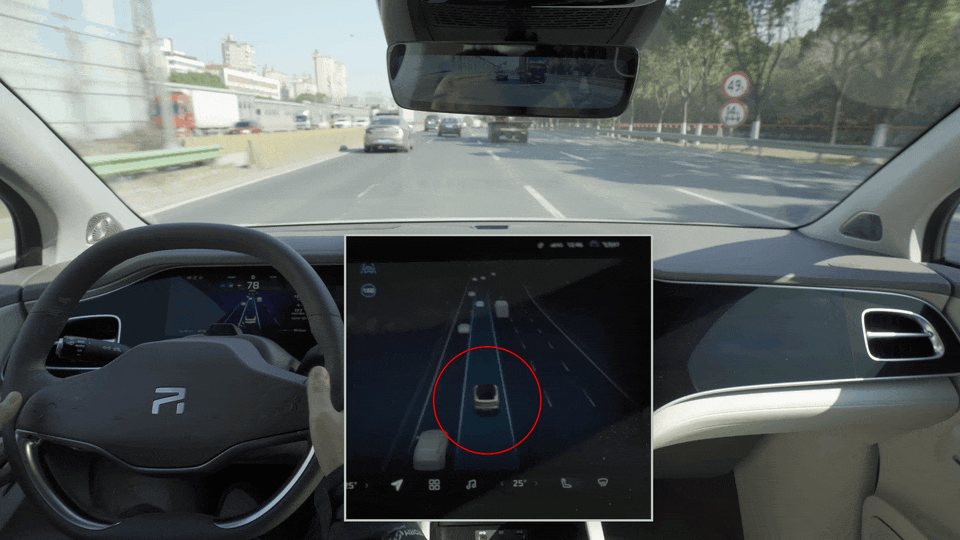
Combined with the support of visualization and AR-HUD, the driver’s confidence in FEIFAN R7 will also be enhanced when using assisted driving.
To summarize FEIFAN R7’s performance on basic assisted driving, compared with other models such as Model Y and XPeng P7 from a comprehensive experience, FEIFAN R7 has advantages in better longitudinal control performance, extremely high efficiency of flicking the turn signal and changing lanes, overall human-machine co-driving consistency, reducing the number of reminders by the capacitive steering wheel, visual and AR-HUD support, and overall experience, which leads to my conclusion at the beginning, FEIFAN R7’s experience of ACC + LCC is definitely in the first echelon.
Smart cockpit, helping the co-driver to close the door without getting off the car
In addition to the excellent performance of LCC, I found that FEIFAN R7’s smart cockpit performance has refreshed my perception of traditional car companies.
Like many new models, FEIFAN R7’s physical buttons in the car are “pitifully few.” There has always been a popular topic that physical buttons are convenient and fast, and making them into a large screen is to save costs. In my opinion, perhaps the automakers’ understanding of smart cockpits is not profound enough, and they have not found a balance between design and practicality. Ultimately, a smart cockpit requires excellent human-machine interaction capabilities to be effective.## Using Physical Buttons vs Touch Interface in Smart Cockpit Development
Using air conditioning as an example, the common method of physical buttons is to use a combination of knobs and buttons to adjust the air volume, temperature, air circulation, de-fogging, and other settings. Why do people find it convenient? Because it allows a one-button direct access. This is the simplest form of interaction, see what you need, press the button, and do the job. At the early stages of the development of the smart cockpit, due to high integration, this seemingly simple task became complicated, and most car models required entering a secondary menu to adjust the air conditioning, which undoubtedly increased the complexity of interaction.
But with the Flevin R7, I found that simple things don’t have to be complicated. Flevin’s approach is to hold and swipe to adjust the air volume and temperature, which is no different from turning a physical knob. The demand for air circulation has also become automatic, and encountering tunnels or congested scenes, the vehicle will automatically switch to internal circulation. Of course, there is also a voice assistant to help you adjust all of this, but sometimes you just don’t want to speak, and I think touch interaction has a higher priority.
When I first got the car and opened the car control interface, the default interface had only a Flevin R7 vehicle model. I found that some basic functions can be directly interacted with on the 3D model, without the need to select the menu bar for adjusting the rearview mirror or headlights, etc.
Additionally, I found that the 3D model can directly control the car door opening and closing. On the first day back to work after the New Year’s Day holiday, I sent my girlfriend to work, and she got out of the car and ran away, leaving the car door open. When I opened the car control interface, I found a small blue dot on the car door. I believe this design is not only for situations like mine, but also for inconvenient elderly people or those who can’t free their hands to open the door.
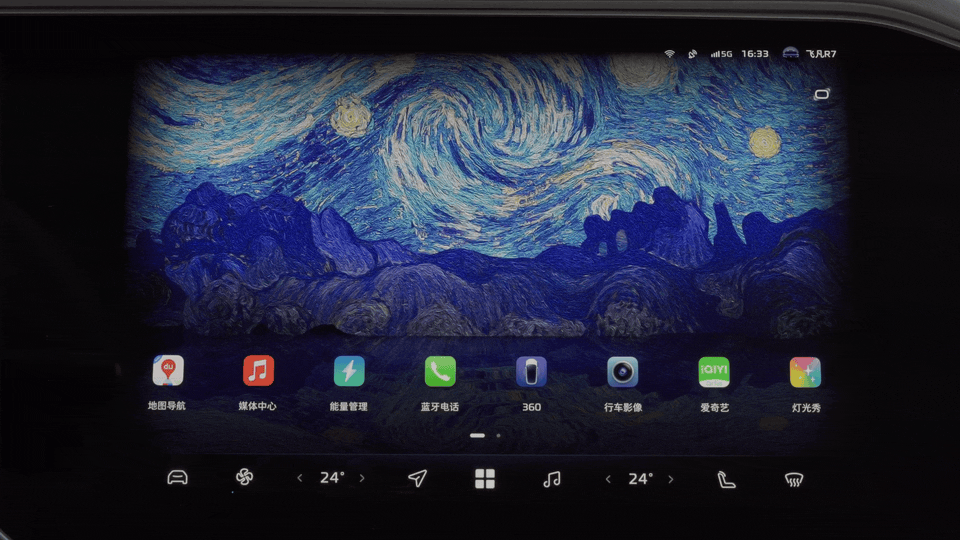
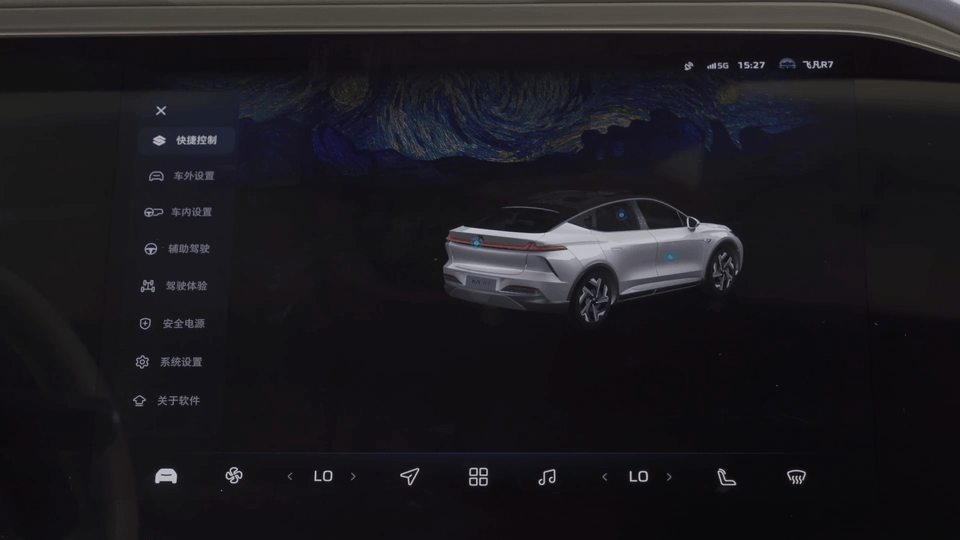
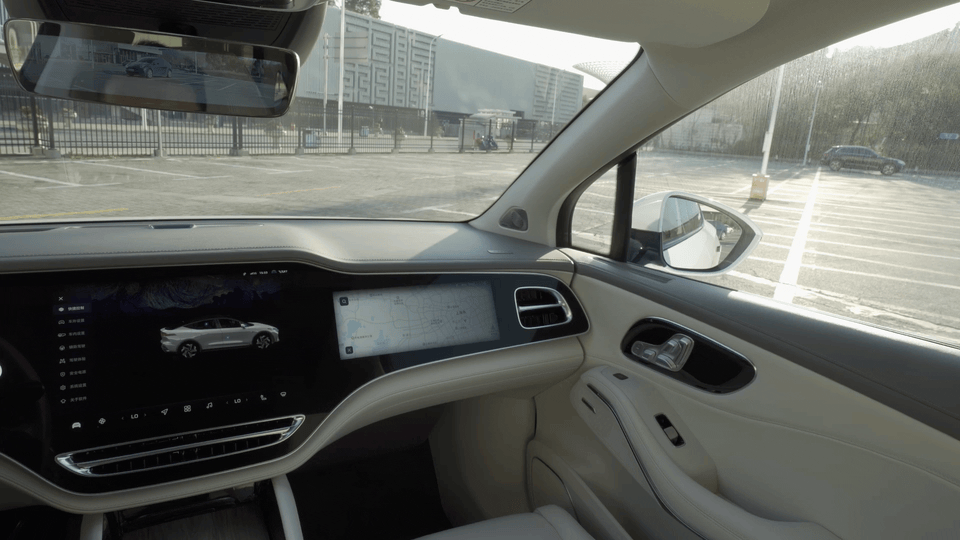 To be honest, cockpit interaction is simply straightforward – the best interaction is to minimize the user’s learning cost. Flyfun has solved some frequently required interactive functions with a 3D model. If you delve into the details of Flyfun’s cockpit system, the icon design is clear, the UI design is beautiful and reasonable, the design and functionality of the negative first screen are just as intuitive as iOS, and you can also customize the functions through long press selection.
To be honest, cockpit interaction is simply straightforward – the best interaction is to minimize the user’s learning cost. Flyfun has solved some frequently required interactive functions with a 3D model. If you delve into the details of Flyfun’s cockpit system, the icon design is clear, the UI design is beautiful and reasonable, the design and functionality of the negative first screen are just as intuitive as iOS, and you can also customize the functions through long press selection.
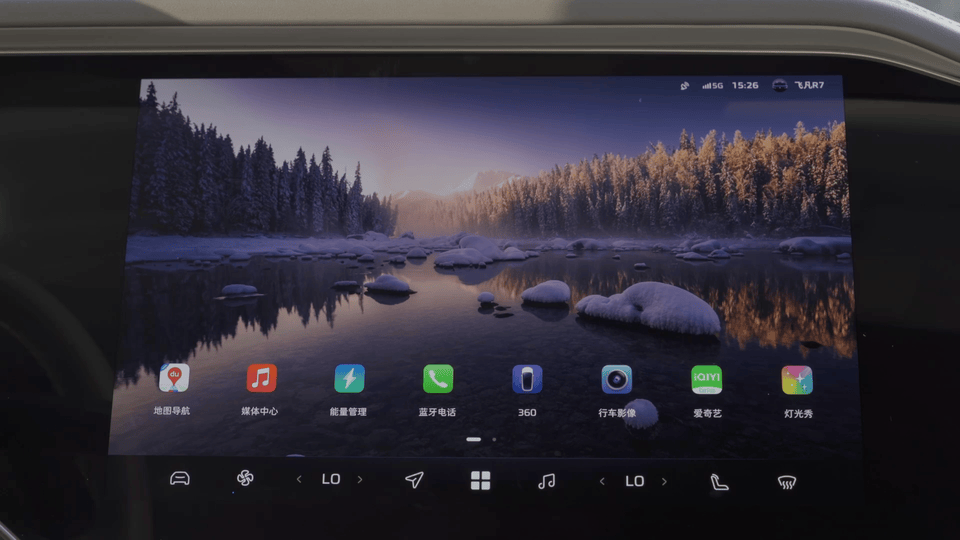
With good interactive ability, the trinity screen is also less cumbersome. There have been a few car models that have experienced the trinity screen, and I have observed a phenomenon – the passenger screen will give passengers a sense of belonging. Whether it’s the ideal, Lantoo or this time, Flyfun’s R7, my girlfriend is more likely to “point and click” at the passenger screen. She navigates when exiting the garage, checks real-time driving information, watches movies on long drives, among others. And she uses the passenger screen’s functions extremely skillfully, making me realize that there is more to the R7’s passenger seat than just a leg rest and a foot pad.
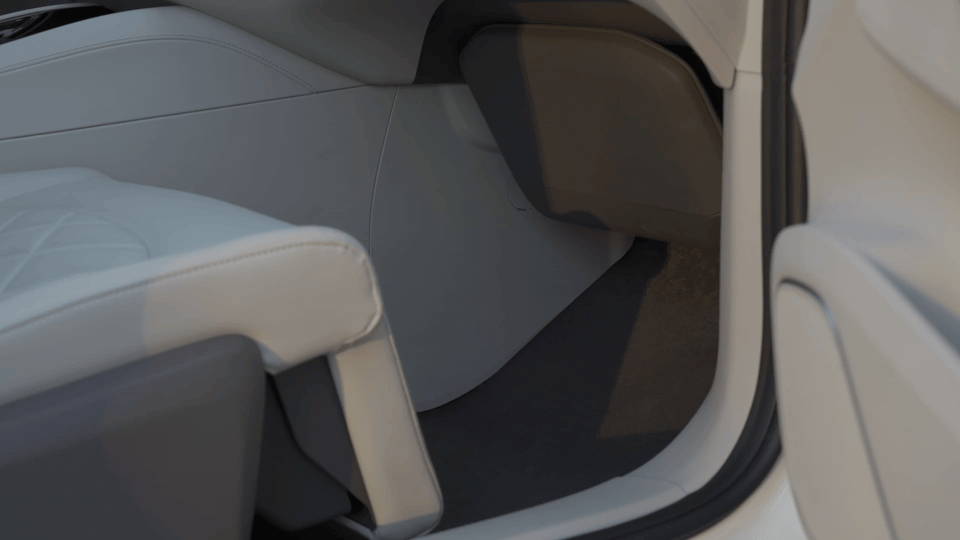
So my point of view has completely changed from initially thinking that the passenger screen is useless to realizing its potential. I think this is similar to the feeling of having an entertainment screen on the backrest of a seat when flying a large plane. In addition, the Flyfun R7 also has a three-finger flight screen function, which has “forced” me to watch a lot of video content. When I was writing this article, I was also thinking that there are still few apps that can be used with the three-finger flight screen function at present. If apps like Volcano Interactive Entertainment (TikTok) could be integrated in the future, the experience would be taken to the next level.
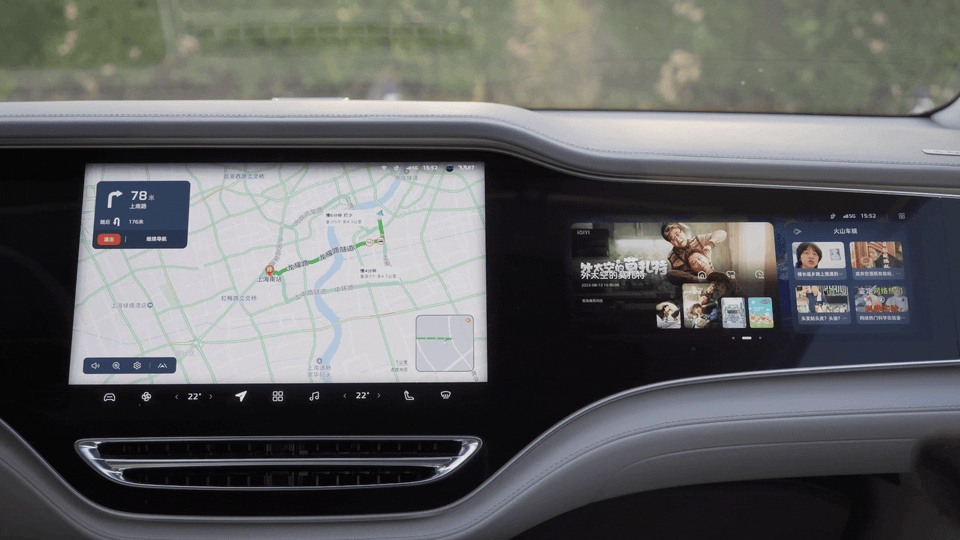
While I was charging and watching iQiyi, I discovered a screen casting function that can cast the screen onto the AR-HUD when clicked. This makes it fully visible from the driving position without needing to divert your view, which is much better. Meanwhile, my girlfriend was busy exploring TikTok on the passenger screen.“`
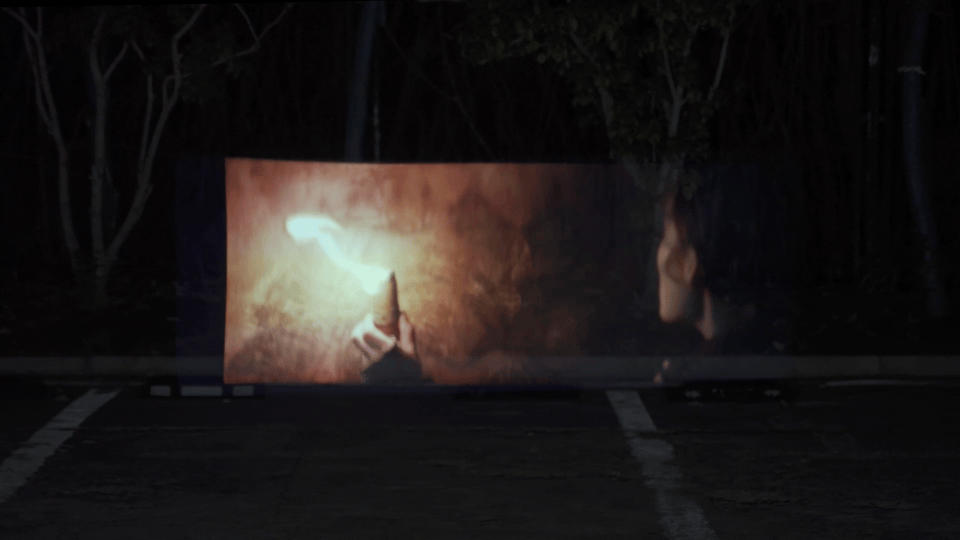
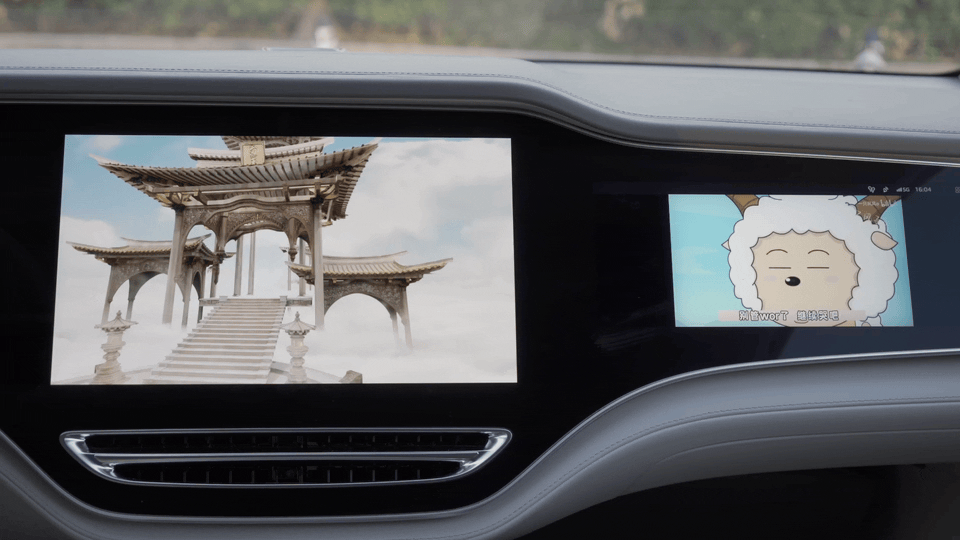
This has made me understand that everyone has a need for independent space, and it was only because the product was unable to provide this experience before. In addition to providing independent space, the FEIFAN R7 also allows for interaction, which may maximize the value of the FEIFAN R7’s three-screen display. Of course, as a newly launched model, there are naturally imperfections, such as the lack of a navigation small window when returning from the navigation interface to the main page, which needs to be addressed in order to promote further progress for FEIFAN.
“In just three days, everything can change” is my attitude towards the FEIFAN R7 intelligent cockpit, with a more design-oriented UI interface, visible interaction, and further exploration of the functions of the three-screen display, taking user experience as a starting point. It is clear that FEIFAN, as a brand under the major manufacturer, has a deep understanding of user demand.
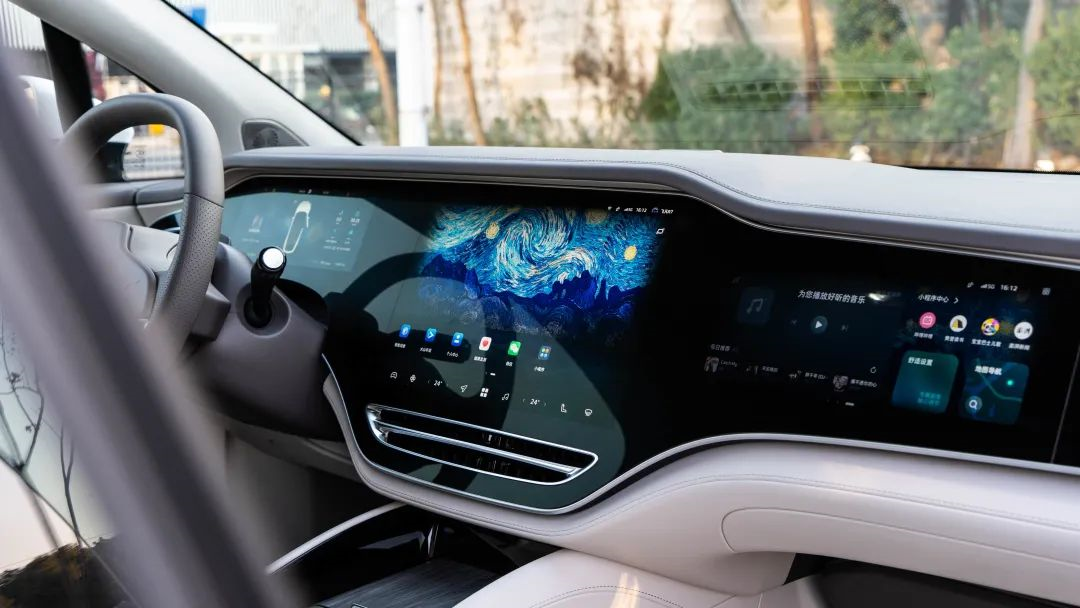
For consumers, the crazily competitive field of intelligent electric vehicles in China is driving full-scale acceleration of intelligence. The difference between the intelligent cockpit of 2020 and that of 2022 is like night and day.
AR-HUD, not just for watching movies
Finally, let’s talk about the AR-HUD, which plays an important role not only in entertainment scenarios like movie-watching, but also in everyday driving and assistance functions.
What is AR-HUD?
Literally, it is a head-up display with augmented reality capabilities. In my few days of test driving, the most obvious perception is that I have made fewer wrong turns. Usually, when driving, I like to listen to some podcasts, and sometimes I end up taking a wrong turn. However, the AR-HUD can provide clear prompts at the exit of a ramp, roundabout, or bend where lane-changing is required, and can accurately mark the route you need to take, which presents a clear advantage over traditional HUD or navigation information.
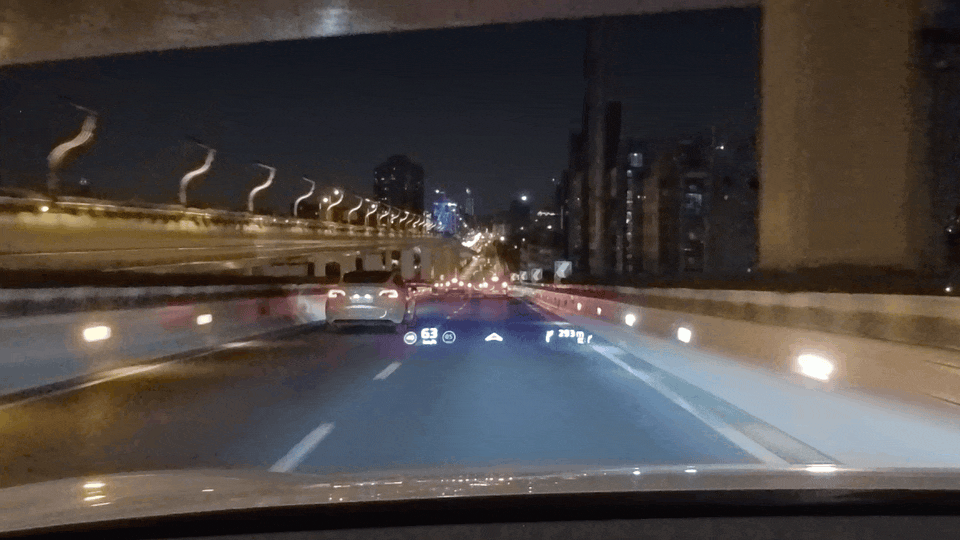
The main reason why AR-HUD was not popular before was due to factors such as insufficient brightness and low degree of road integration. The AR-HUD that RisingAuto and Huawei cooperated on is worth discussing, so I also checked the parameters:
- VID (virtual image distance) 7.5 meters;
- Display area of 70 inches;
- The largest FOV of mass-produced cars is 13° × 5°;
- Resolution of 1920 * 730 and contrast ratio of 1200:1;
- Maximum brightness of 12000 nits;
- Huawei’s algorithm calibration.
Obviously, issues such as brightness, clarity, and FOV have been solved, and Huawei’s algorithm calibration allows this AR-HUD to better integrate with the vast majority of roads, which ensures its basic ability.
However, simple basic capability is obviously not enough to make consumers pay for it.
In terms of assisted driving, AR-HUD can clearly mark vehicles recognized in front of it, and if it cannot initiate a lane change during a turn signal operation, it will display a red warning bar on the lane line for warning purposes.
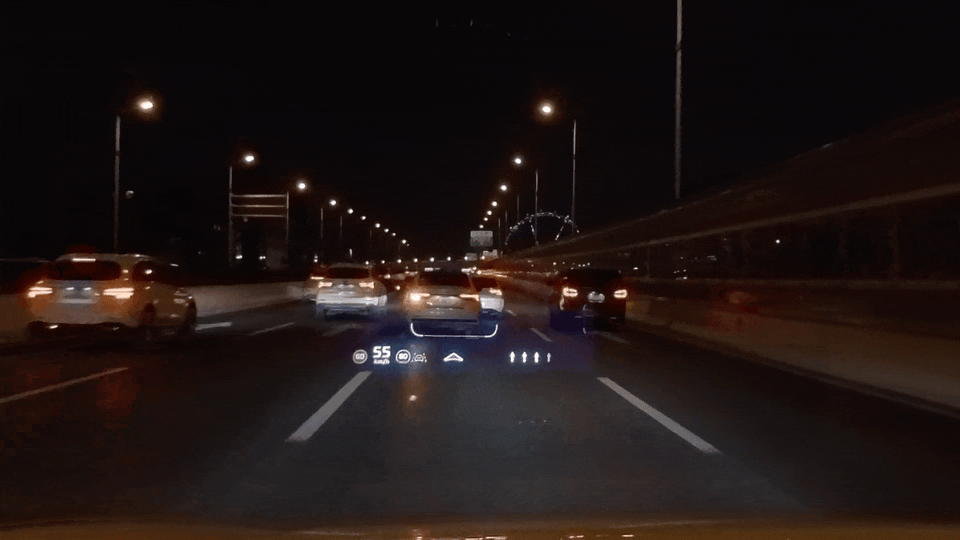
In addition, AR-HUD can also mark road participants, especially the function of recognizing cyclists or pedestrians at night, as shown in the figure below, which is quite useful for roads with dim street lights or internal roads in residential areas.
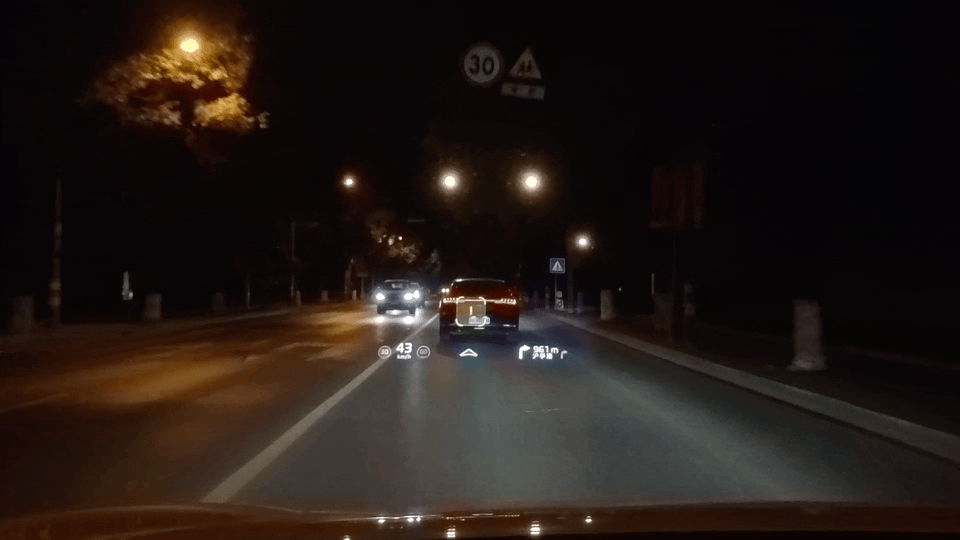
Furthermore, this AR-HUD system can also provide POI (points of interest) information, making it very convenient to guide drivers to charging stations. When arriving at some destinations, it will also provide real photos to help you find the location.
Overall, the hardware quality of this AR-HUD system is top-notch, and the software integration has reached a fully functional state at this stage. Of course, there are still some minor bugs, but I believe that through later OTA updates, the RisingAuto R7 can provide even better AR-HUD functions and gameplay.### Closing Remarks
The comprehensive and intelligent experience provided by FEIFAN R7 exceeded my expectations. Basic functions available in other vehicles are not enough to meet FEIFAN’s standards. By understanding the real needs of users in driving scenarios, FEIFAN constantly refines its products’ intelligent experience, ultimately achieving better user experience compared to many competing products. Recently, the slogan “FEIFAN R7 is better than Model Y” has been seen in offline advertising, highlighting R7’s advantages in space and intelligent performance.
Especially now that there is no standard for the experience of intelligent functions, the feelings of “user-friendly” and “functional” are completely different. In this era of intelligent growth, consumers’ perception of intelligent experiences is still weak, and there is no consensus on the definition of a good intelligent product. In my opinion, at least, a good intelligent product should ensure beauty, simplicity, ease of use, and convenience.
After a few days of experience, I believe that FEIFAN R7’s intelligent performance can earn a score of 80 out of 100 at the current stage, with strong potential in both interaction and functionality. Although FEIFAN’s user base is not yet as large as Tesla’s, it has the potential to compete with the top players. Through continuous OTA upgrades in the future, perhaps we can revisit FEIFAN R7 after a year to see if it has grown into an even better player in the market.
This article is a translation by ChatGPT of a Chinese report from 42HOW. If you have any questions about it, please email bd@42how.com.
